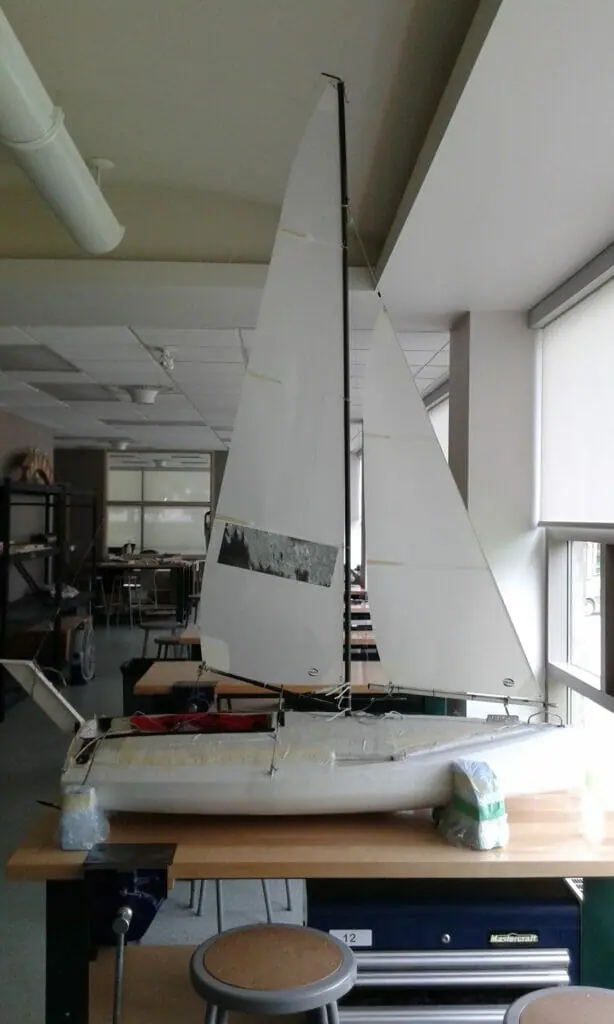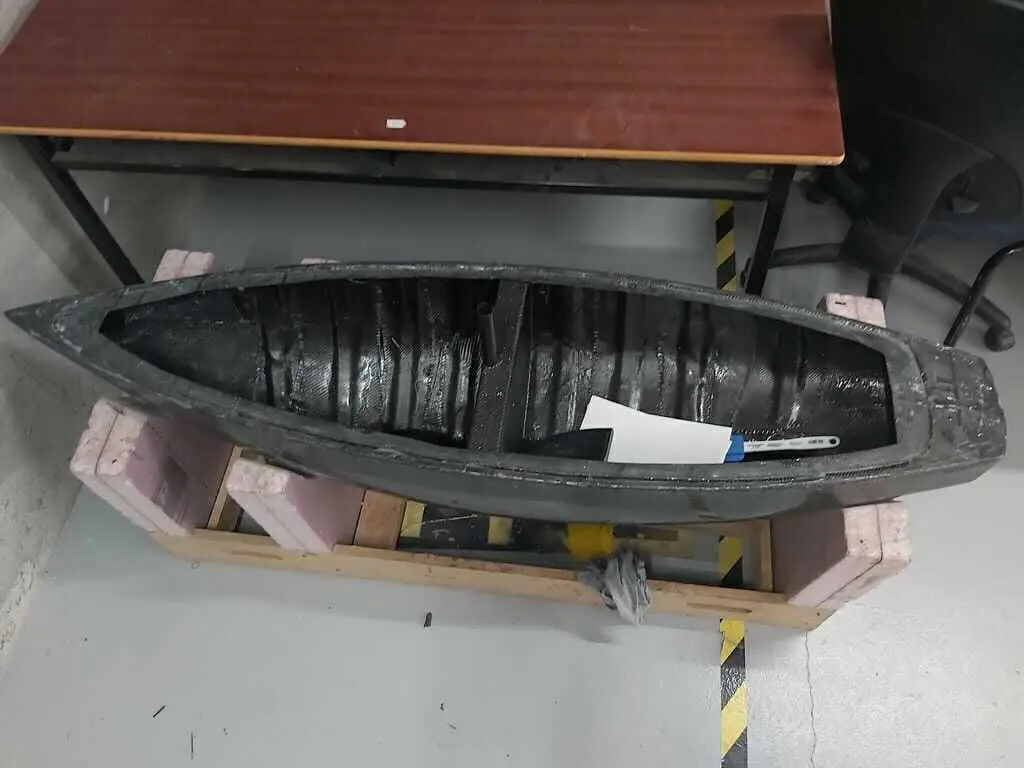A group of Dalhousie University engineering students are attempting to build the second autonomous sailboat to ever cross the Atlantic Ocean.
The Dalhousie Autonomous Sailboat Team is aiming to launch a fully autonomous sailboat in August 2021 to compete in the Microtransat Challenge, a transatlantic race of autonomous boats between university programs and engineering companies.
Dalhousie last entered the challenge in 2018. At that time the team was led by faculty who selected a group of students to work on the boat. But the 2018 team was disqualified when they lost contact with the boat after 76 days at sea. It was eventually found more than 200 days later on the coast of Ireland.
The team is now being led entirely by students.
“Once this is done, we’re going to put it in the water and we’re not going to give it any information,” said Nolan Cain, a fourth-year mechanical engineering student and the mechanical team lead. “Once it sets sail, it does all of its own steering and everything, and propulsion. We have a solar panel, so it can consistently recharge itself, and we just get location data from it every few hours.”
The team

The team was initially run by the faculty of engineering, led by the past dean Josh Leon who became Dal’s assistant vice-president of information technology services in 2019. Leon and other faculty members on the team selected upper-year students to work on the project, according to Jade Farr, the management team lead.
The failed boat was called the SeaLeon. This year’s entrant is named Nautono.
This year, the team is made up of more than 40 students that range in experience from second-year to graduate studies, said Farr. Having a variety of students with different expertise is a major asset to the team, she said.
The team is divided into four sections based on students’ interests and skill. These sections are management, electrical, mechanical and software.
The boat
According to Cain, the most important aspect of each team’s work is ensuring it functions in harmony with the rest of the boat. While the mechanical team works on designing a mechanism to turn the rudder, they must regularly consult with the electrical team to ensure there’s space for the required technology that will bring the boat to life.
All of this harmony, and the possibility of Nautono’s success in the transatlantic competition, begins with its software.
“Our main focus is an upgrade to the navigation system, so that we can ensure that the boat actually goes where we want it to,” said Seamus MacInnes, a third-year electrical engineering student on the software team.
Nautono will navigate its way across the Atlantic using a series of GPS waypoints that have been pre-programmed by the software team. To capture wind speed, it will be equipped with a weather station that senses the wind’s direction and reacts accordingly.
Nautono also has the ability to make its own decisions, through software such as the automatic identification system (AIS). The AIS tells Nautono if any other vessels are nearby, allowing it to change its course as it sees fit.
Nautono will be constantly recharging itself through a solar panel equipped to the boat.
The boat is being built with both cast resin and carbon fibre, which will make it both strong and lightweight, Cain said.
The project costs between $7,000 to $8,000, said Farr. The team was able to make up half of its budget through a $3,000 donation from Dal faculty, as well as $1,000 in sponsorship through a student on the team in the capstone program –– a program within the faculty of engineering where industry members sponsor student projects that solve real world problems. The rest of the funds are being made up through corporate sponsors.
A challenging transition for a new team
Due to COVID-19, the team is facing the challenge of not being permitted to use Dal facilities.
“Going into Dal would have been easier,” Cain said. “We know the layout of the labs and what we’re able to use and what we have access to there.”
Instead, they were able to gain access to the Centre for Ocean Ventures and Entrepreneurship (COVE) in Dartmouth, N.S. “That’s been a huge help for us,” Cain said.
Another large challenge, according to Farr, has been the lack of information available about the SeaLeon, Dal’s last autonomous sailboat.
“It’s really important to have those transition documents and we just didn’t have them,” Farr said. Additionally, no one on the current team was also on the 2018 team.
“I’d say the transition has been a struggle for everybody,” said MacInnes, “we don’t have anyone on the software team that knew much about the old code coming into it. So, a lot of effort has to go into understanding the old code and finding out where it needs upgrading.”
Despite the challenges and previous failures, the team is still inspired to see the project through.
“It’s just a really cool project,” said MacInnes. “And it would be real fun to have our names on a boat sailing on its own to Ireland,” he said.


Recent Comments